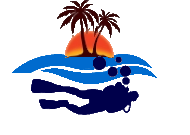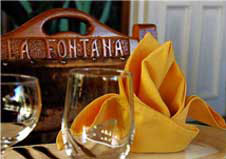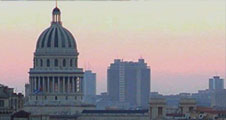Cuban provinces: Camaguey
Near a hundred kilometers of beaches of an exceptional quality located at Santa Lucía Beach and a group of surrounding keys, is the main and most renowned tourism attraction of the province of Camagüey. This province covers 15 900 km2 of the central-east region of the Cuban archipelago, and the two main pillars that sustain its economic development have traditionally been the sugar and cattle industries.
The birth of Camagüey as a capital in Punta de Guincho, facing the Bay of Nuevitas, dates back to February 2 of the year 1514. Camagüey was one of the first seven villas founded by the Spanish colonizers in the Island and baptized as Santa María del Puerto del Príncipe.
Nevertheless, it was only on January 6, 1528 that the capital was definite and paradoxically moved to its current location, between the Tínima and Hatibonico rivers and well away from the coasts, to avoid the frequent attacks of pirates and corsairs "according to some historians" or escaping away from plagues, the infertility of the soils and the lack of water; according to the opinion of other specialists.
Most of the foreign visitors who come these days to this tourist destination, through the services of the Ignacio Agramonte International Airport or by road when driving from other regions of the country, are attracted by the natural charms of Santa Lucía, particularly by its 20 kilometers of sandy beaches, and the warm and transparent waters protected by the second largest Coral Reef of the Planet, which stretches to the west along near 400 kilometers parallel to Sabinal, Guajaba, Romano and Cruz Keys and extending up to Varadero.
It is precisely in front of Santa Lucía that the Coral Reef is closer to the Cuban coast. As close as 200 meters from the shore, it is possible to dive into the fascinating world of 50 species of Coral, 200 species of sponges, near 500 species of tropical fish and, on top of all that, the remains of at least 27 sunken ships.
The diving area covers a sector of 5 kilometers and it has limits to the east with Lavanderas Reef, and to the west with Playa Bonita and La Boca, a peaceful semi-isolated place that sits next to the entrance of the bay of Nuevitas and very close to a colorful village of fishermen.
The Black Coral; the "Cuerno de Ciervo" (Dear's Horn); the "Ramillete de Novias" (Bride's Bouquet); purple, orange or yellow sponges; shads, snooks, levisas, skate, green morays, among several hundreds of species constitute the population of this sea bottom, where you can also find the remains of the Galeon Fernando Estela and the ships Mortera and Nuevo Mortera, the only two built for Cuba in the British shipyards of Liverpool between the end of the XIX century and the beginning of the XX century.
Fully enjoying nautical activities in Santa Lucía goes even beyond its limits, to Cayo Sabinal (with a surface of 335 km2 and more than 30 kilometers of virgin beaches), which can also be visited by road through a causeway little more than 2 kilometers long.
In Cayo Sabinal, ideal place for photo hunting, tours and nautical recreational activities; there are fresh water lagoons, where different species of the local fauna meet, among which out stands a large colony of pink flamingos.
Also on the way to the east of the capital, only 15 kilometers away from downtown, you can find a town founded in 1733 out of the existence of mineral-medicinal waters that will invite you to get acquainted with its historical, architectural, cultural and natural values: Santa María del Rosario.
Like any other great city, Havana is the center of the intense political, scientific and cultural life of the nation. Tens of museums, theaters and concert halls, galleries of art and cultural institutions are known all over the city, and some like the National Ballet of Cuba, the House of the Américas, the Foundation of New Latin American Film, or the National Folkloric Dance Group have an enormous international reputation.
And, of course, it is also a city where good food and entertainment have reserved their own space in renown places like la Bodeguita del Medio, El Floridita, Cabaret Tropicana, and others that are less known, but with a high degree of preference among the thousands of tourists who visit the Cuban capital every year.























